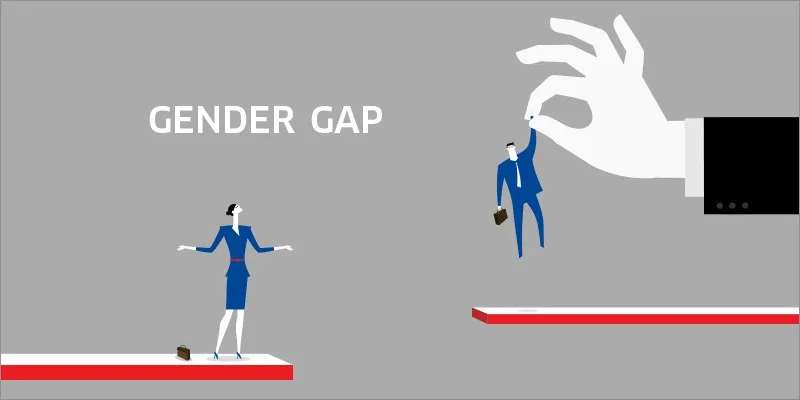Women earn an astounding 37pc less than men in manufacturing, here’s the glaring disparity in 8 other sectors
The average gender pay gap in India stands at 27 percent, where men earn a median gross hourly salary of Rs. 288.68, whereas women earn only a median gross salary of Rs. 207.85 per hour, according to the numbers released by the latest Monster Salary Index (MSI), by Monster.com, in collaboration with Paycheck.in, managed by WageIndicator Foundation, and IIM-Ahmedabad.

The median gross hourly salary increased by 21 percent from Rs. 174.5 in 2014 to Rs. 212.6 in 2015; however it was higher in 2013 at Rs. 225.2. According to the report, some reasons behind this gender pay gap could be preference for male employees over female employees, preference for promotion of male employees to supervisory positions, career breaks of women due to parenthood duties, and other socio-cultural factors.
“While some critics may claim that this gender pay gap is simply due to the choices women make – occupation, family, or education level – that could not be further from the truth. There is a strong need to create equal opportunities for all, particularly women, who are key contributors in the Indian job market,” says Sanjay Modi, Managing Director of Monster India, Middle East, Southeast Asia and Hong Kong.
The report covers eight different sectors – IT Services; Health care, caring services, social work; Education, research; Financial services, banking, insurance; Transport, logistics, communication; Construction and technical consultancy; Manufacturing and Legal and market consultancy, business activities. It is based on the WageIndicator dataset covering the period of two years and nine months, from January 2013 to September 2015, assessing a sample of 31138 employees.

- Here is a sector-wise overview of the pay-gap:IT Services:
The IT sector is strongly male-dominated, and hence, the sample here constituted only 11.3 percent of female respondents. The low proportion of women working in this sector can be the main cause of the huge gender pay gap existing in this sector. In median, men earn Rs. 375 per hour in 2015, whereas women scraped just above half of that amount, at Rs. 206. What is more disturbing, is that the male salaries have shown an upward climb over the three years of the study, whereas the women’s wages sharply declined, from Rs. 261 in 2013, to Rs. 206 presently, thus widening the gender gap as times progress. One must note, however, that the small size of the women sampled, may have warped the findings.
- Health care, caring services, social work:
The gender pay gap has almost been closed in this sector, as men earn Rs. 223 per hour, and women, Rs. 218 per hour. However, getting here took some massive amends, given where they had started – the gap stood at a startling 36 percent in 2013. It should be noted, though, that the sample here had a stark disparity, as only 313 women were interviewed, vs. 1513 men. This could have exaggerated the findings.
- Education and research
As of 2015, the men earned Rs. 216 per hour, whereas their female counterparts earn just Rs. 192. For both genders, wages in this sector have decreased due to the economic slowdown in 2014, but stabilized in 2015. However, while the wages of men are yet to reach the level they were at in 2013, the wages of women have already surpassed that level. This is clearly a good sign in terms of lowering the gender pay gap and enforcing pay equality for women.
- Financial services, banking, insurance
This sector also houses a gap. Across 2013, 14 and 15, in median, the men earned Rs. 305, 318, 316 respectively, whereas the women in turn, clocked Rs. 254, 259 and 266. When comparing year-to-year, one might notice that wages of both sexes didn’t change significantly. Currently, the gap stands at almost 16 percent.
- Transport, logistics, communication:
A pay gap has surfaced here as well, where the men take home Rs. 254 an hour at present and the women on the other hand, get Rs. 216. On comparing the year-to-year wages for men and women, both parties saw a hike in their payscale in 2014, and in both cases, they declined considerably thereafter in 2015. The Gender pay gap for 2013 was Rs. 48.1 per hour which was almost eradicated in 2014, with a Rs. 8 difference. Finally, in 2015, it has been brought down to Rs. 37.5.
- Construction and technical consultancy:
Taking an average of the three years evaluated, the men earned Rs. 287.4 per hour whereas their female colleagues earned just `214.7, thus indicating a 25.3% pay gap. As of 2015, women earn Rs. 223 to a man’s 288. However, over the span of three years, the gender pay gap, which had reached 29% in 2013, was brought down to 23% 2015.
- Manufacturing:
The Gender pay gap in manufacturing is the highest pay gap recorded among the sectors studied here. The average hourly wage for men is Rs. 261; and women Rs. 187. This is a difference in wages of Rs. 74, amounting to a 37% Gender pay gap. Also noteworthy, is how the men’s wages have increased consistently over the years, while the women’s wages declined sharply from 2013 to 2014 and then increased slightly in 2015. This trend indicates widening of the Gender pay gap in favour of the men.
- Legal and market consultancy, business activities:
Taking the average of the sample period, men reported a median hourly wage of `256.6 per hour, whereas women report a median wage of `206.6 per hour. This represents a 24.2% gender pay gap.
The MSI report further indicates that while only 52.7 percent of employees are satisfied with their pay; a significant 75 percent are satisfied with their job. This clearly highlights how job satisfaction is not necessarily associated with satisfaction of salary.
Over all, over the span of the three sampled years, the median wage of `288.7 for men is unchanged, however, in case of women, one can see a slow increase in the median wage, as it went from 210 in 2013, to 218 in 2014 to finally, 219 in 2015, which is indicative of a positive change towards pay parity for men and women.







